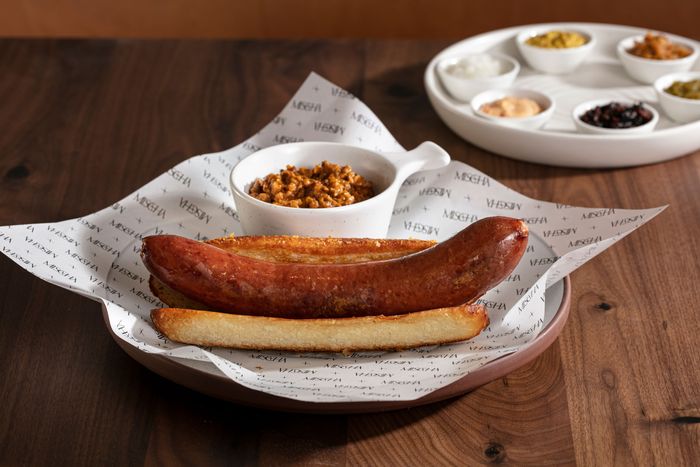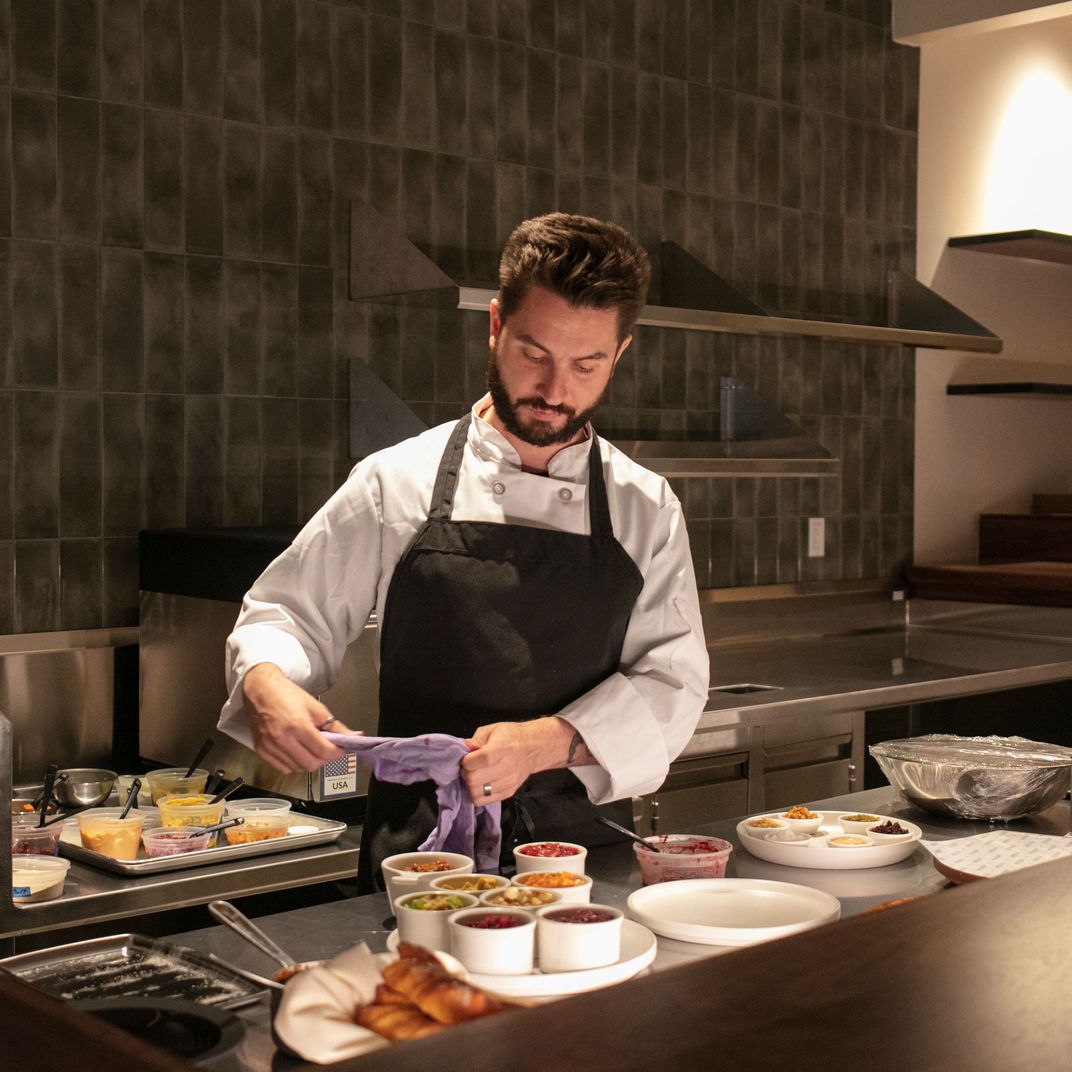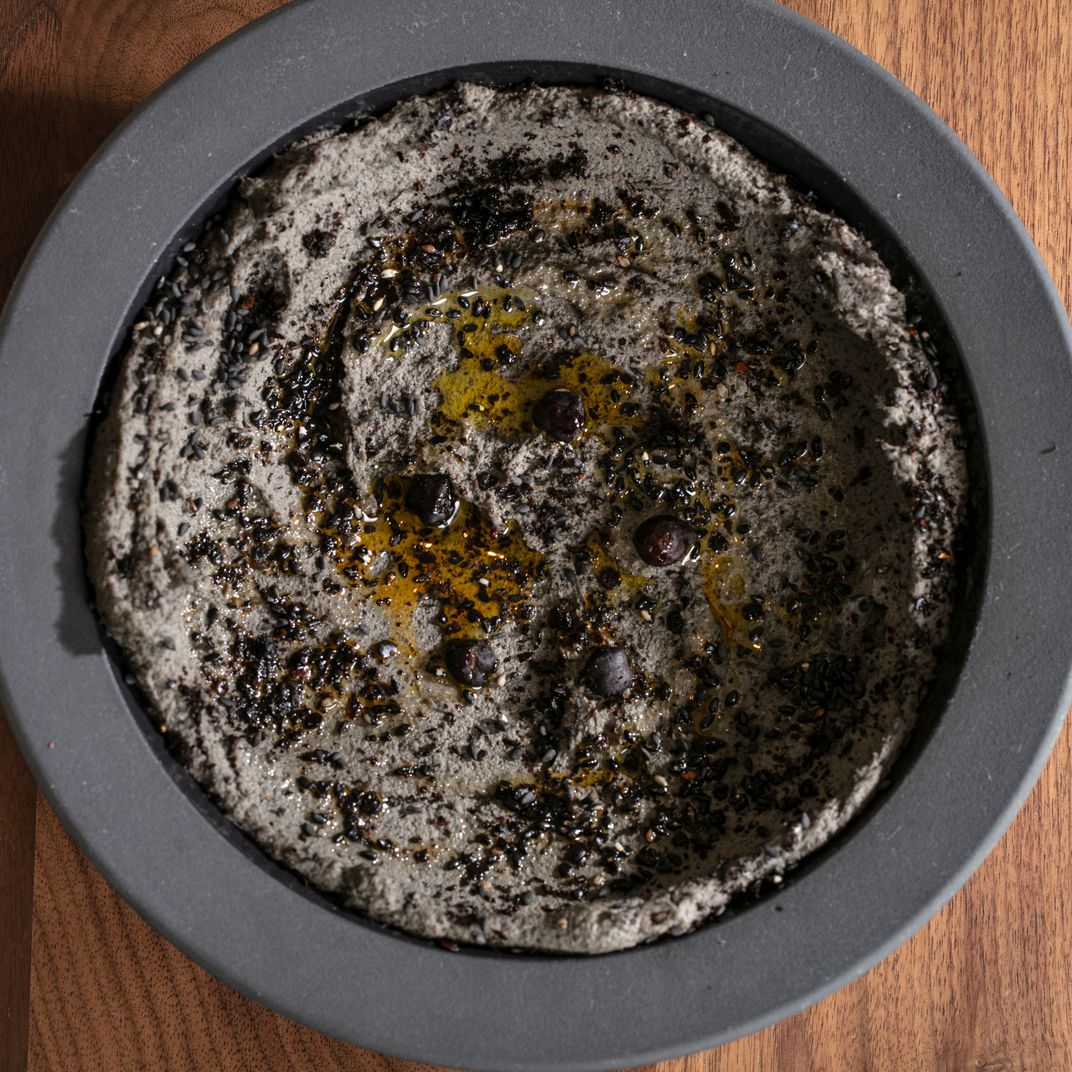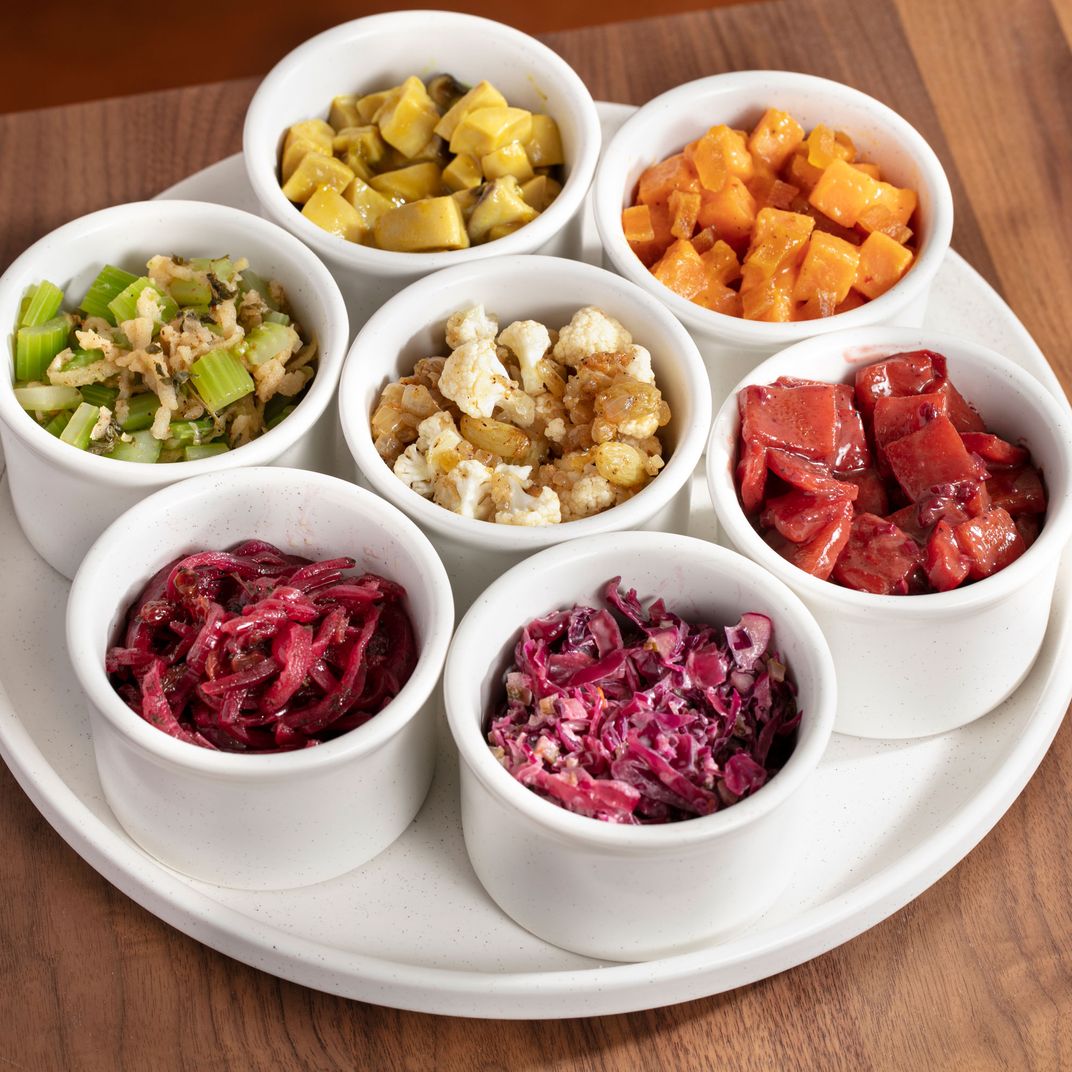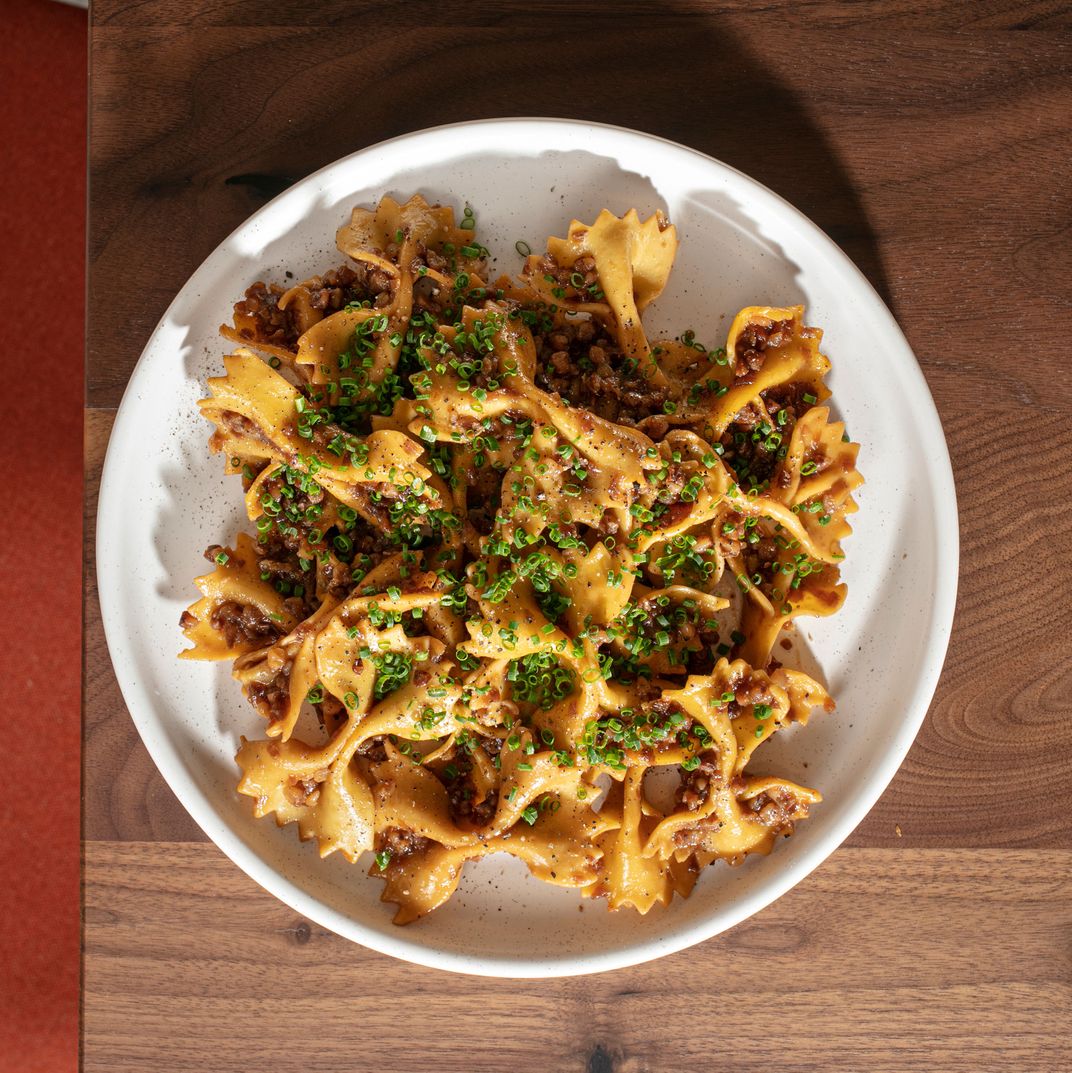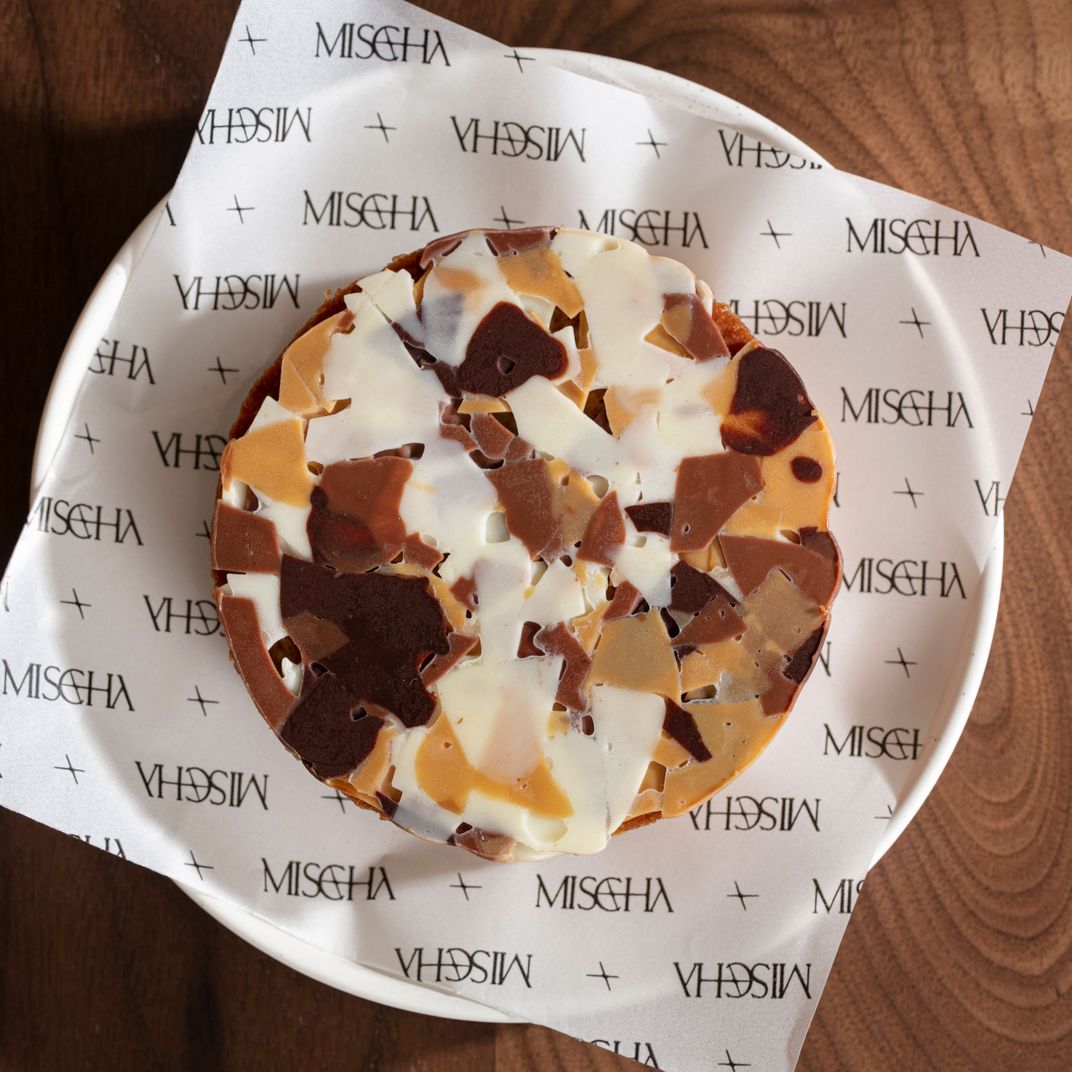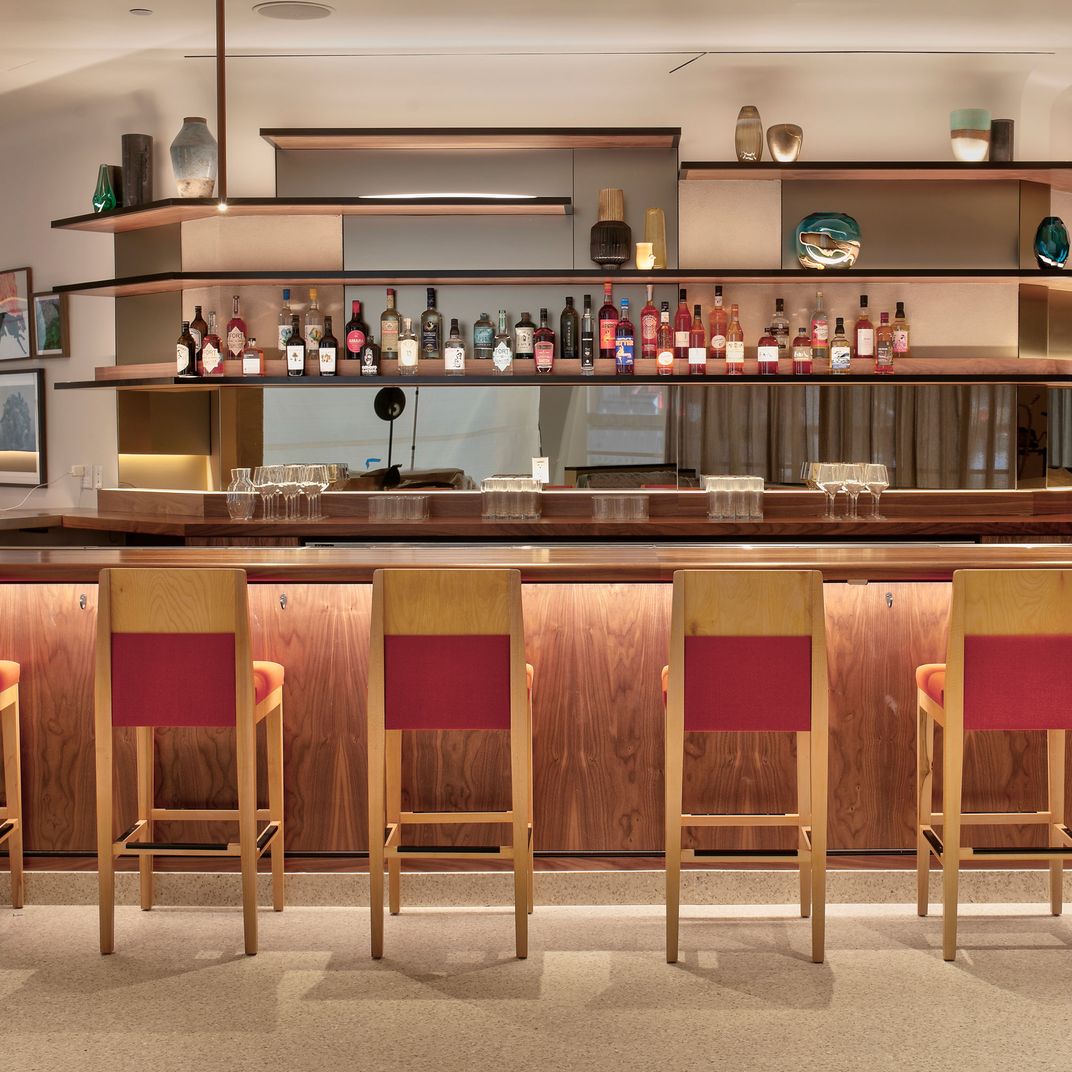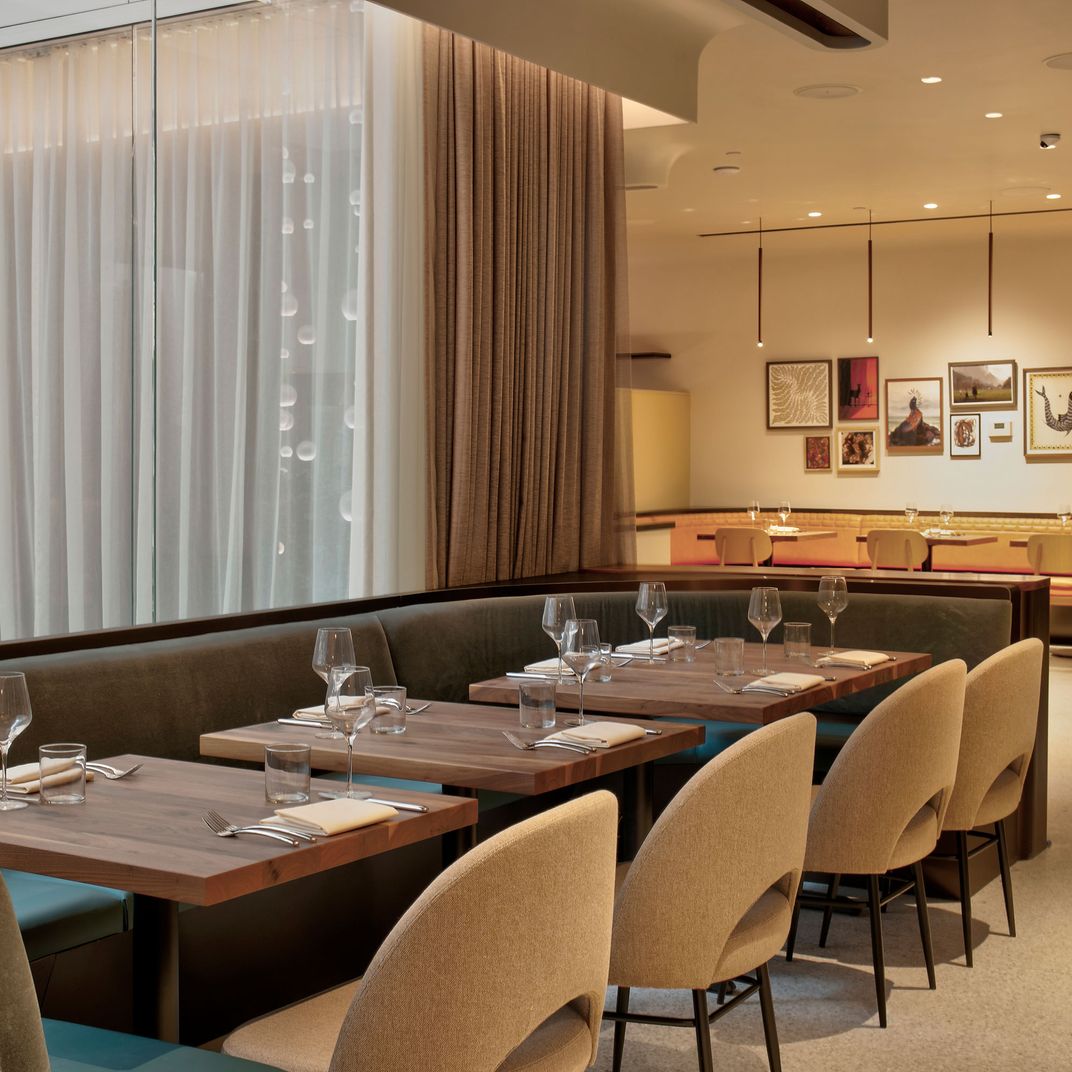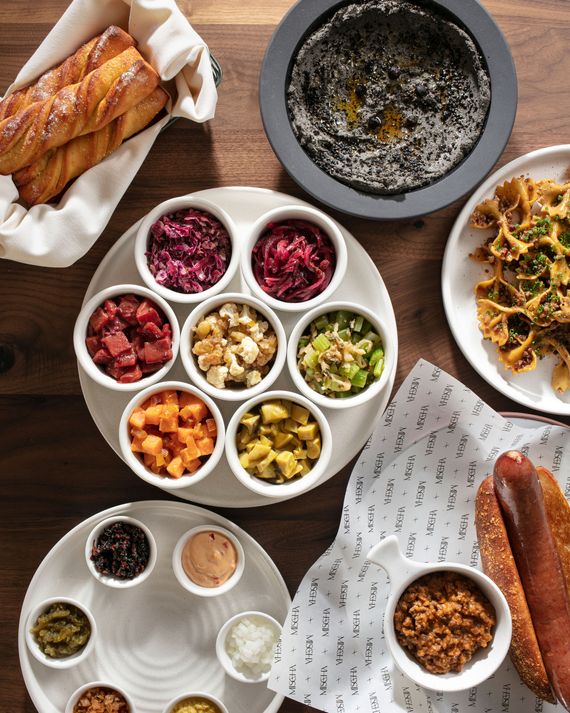
Alex Stupak speaks in solid blocks of text. All details are “very important,” every topic from masa to mathcore germane. And when I meet him at his new restaurant, Mischa, the subject of the day’s disquisition is why this midtown “American” restaurant will not be the restaurant anyone expects. Let’s start with the name. A diminutive of Mikhail — Stupak is half-Ukrainian — “Mischa” fills one’s mind with borscht and syrniki. “The name intentionally runs interference on the concept,” Stupak says. “It is very important to us to say we’re opening an American restaurant. And if you say, ‘What’s it called?’ and I respond, ‘Mischa,’ and you go, ‘That’s not an American name,’ I got you. I already got you.”
As Stupak leads me into the office tower on the corner of 53rd Street and Third Avenue that houses Mischa, he explains, “I will never do a restaurant that is on the nose.” There’s a pasta section, for instance, with kasha varnishkes, apple varenyky, brown-butter spaetzle, and no spaghetti. “It was very important to me to have a pasta section with no Italian food in it,” Stupak says. “I believe we’ll stick to our guns on that.” His Caesar salad will be made with gai lan because, as Stupak explains, “I went down a rabbit hole on Caesar salads, and it seems like people have used every goddamn cruciferous, but I couldn’t find Chinese broccoli. I thought that would be cool.” There’s jet-black hummus made with black chickpeas, black garlic, and kala jeera. And a hot dog — one of only eight mains — that’s made of dry-aged brisket; confited in smoked, dry-aged beef fat; griddled; and served with dry-aged beef chili, lacto-fermented cucumber relish, and kimchee.
This is Stupak’s version of a classic midtown tavern — the kinds of places he found himself frequenting after two major lifestyle shifts: the birth of his first child in 2015 and the expansion of his Empellón restaurant group, which meant he no longer needed to be in a kitchen at all hours. “Suddenly, I was up at dawn and eating alone in midtown at noon. I found I liked going to the same place every week and ordering the same thing,” he says. As a chef, he wants to create dishes that make diners think, “yet I’m going to Donohue’s and ordering the burger or Hillstone, ordering the yellowtail and French dip every time. I developed a deeper level of solidarity with my customers — I needed an oasis, like they did.”
At the same time, Stupak is intent on avoiding the genre’s traditional Eurocentric gaze in favor of an approach that accounts for the cultural variety of real America and real Americans. Look, for example, at a $29 appetizer listed on the menu as “Seven Vegetables.” It seems simple, but in reality, it’s a set of seven chilled salads, each pulling inspiration and ingredients from its own discrete province in its own discrete hue. “Call it ‘antipasti,’ call it ‘salatim,’ call it whatever you want. A collection of fresh and pickled vegetables is a lovely and civilized way to start a meal,” he says, “Our goal was to globalize it a bit and make sure each one offers a different color.” King-oyster mushrooms, inspired by the tinted pickles of Iran, are stained golden with turmeric and flavored with cumin and rosemary (among other spices). Diced sweet potatoes are mixed with a dressing of apricot marmalade, lemon juice, honey, tomato, ginger, coriander, preserved-lemon powder, licorice, grains of paradise, and at least a dozen other spices. Purple cabbage and sauerkraut are tossed with a gherkin-heavy Russian dressing because, in Stupak’s view, “Russian dressing with iceberg lettuce reminds people of fast food, but when you combine it with cabbage, it feels very New York, very diner.” There are also roasted red peppers tossed with a vinaigrette of freeze-dried raspberry powder. This combination is an homage not to a region or culture but to the French pastry chef Pierre Hermé, an idol of Stupak’s, who introduced a red-pepper-and-raspberry sorbet 20 years ago. As for the curveball — the fact that this idea is markedly different from the other six in the platter — that’s on purpose, too: “I like when one thing that’s different hides in a bigger collection.”
Alex Stupak, who, 11 years after leaving a full-time pastry job to open Empellón, is pivoting again to a restaurant that offers his vision of American cooking.
A deep-black version of hummus.
Seven Vegetables, a collection of chilled salads intended to share throughout the meal.
Kasha varnishkes, part of the menu’s pasta section, which avoids Italian recipes.
Sticky bun cake with caramelized apples.
A chocolate chip cookie.
Stupak wants the space to feel instantly familiar to anyone who grew up in the ’80s.
Curtains can close off the second-floor dining room.
Alex Stupak, who, 11 years after leaving a full-time pastry job to open Empellón, is pivoting again to a restaurant that offers his vision of American cooking.
A deep-black version of hummus.
Seven Vegetables, a collection of chilled salads intended to share throughout the meal.
Kasha varnishkes, part of the menu’s pasta section, which avoids Italian recipes.
Sticky bun cake with caramelized apples.
A chocolate chip cookie.
Stupak wants the space to feel instantly familiar to anyone who grew up in the ’80s.
Curtains can close off the second-floor dining room.
When I visit the 130-seat restaurant, slated to open in November, it’s still a construction site. But hints at its finished form peek out from the contractor’s sheeting. The bar, very long and very deep, is dark walnut with chrome-brushed finishes. “I wanted the bar to be the color of my dad’s stereo cabinet. You know, the serious kind that you weren’t allowed to touch,” Stupak says, running his hand along the veneer. The Hollywood banquettes, shrink-wrapped and awaiting placement, will soon fill the L-shaped room with a large open kitchen. The dining room looks out over a food court, though curtains can shut off the space, and there is no street frontage.
The overall feeling is of a computer rendering brought to life. It may even be a little bit boring. Stupak knows this, and Stupak wants this. “I wanted the place to look very normal,” he says. “If you grew up in the ’80s, I want this to be like your house, which probably still had the décor from the ’80s, before your parents could figure out how to, like, flush out the Three’s Company vibe.” Has he gone haute suburban?
It’s not so simple. By camouflaging his ideas inside the semiotics of comfort food, he ensures the experience will ultimately be informed by his culinary ingenuity. Eleven years ago, people wondered why an acclaimed pastry chef would turn tacos into his life’s work. It turned out well. Now he’ll see if he can do the same thing for mixed greens and shepherd’s pie, both of which make appearances on Mischa’s menu.
More new bars and restaurants
- Lucia of Avenue X Expands With a Soho Alimentari
- At Lola’s, a Chef’s Chef Strikes Out on Her Own
- A Diner Designed by Movie People
- Mama’s Too Is Expanding Downtown


